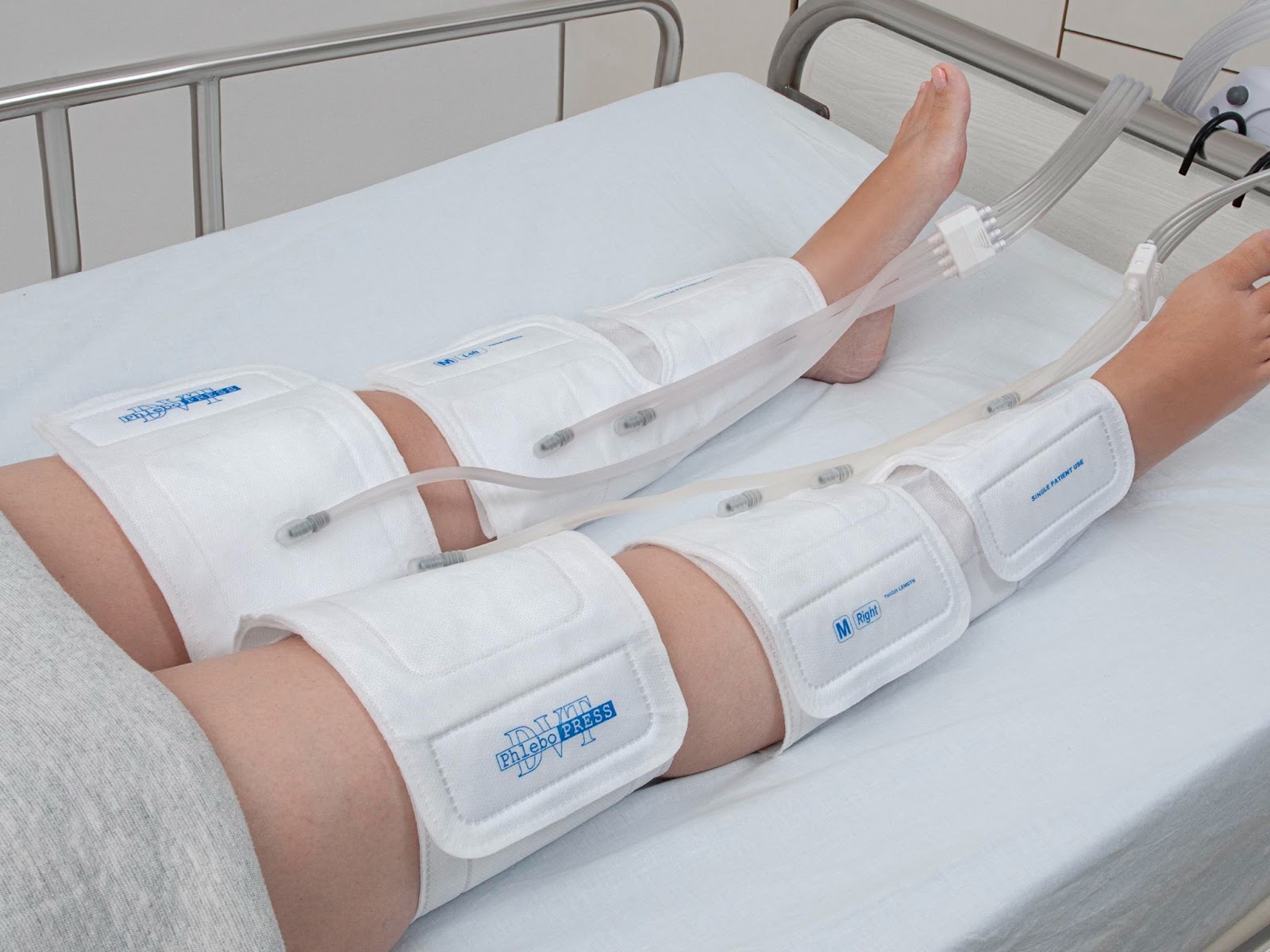How Does An SCD Machine Work and How Long Should I Use It?
9th May 2023

What is an SCD machine?
A Sequential Compression Device (SCD) is used to help reduce the risk of deep vein thrombosis (DVT) and pulmonary embolism (PE). It is a mechanical device that applies intermittent pneumatic compression to the leg to help maintain blood flow and reduce the risk of blood clots. It works by applying pressure to the leg in a sequential manner to help promote the flow of blood in the limbs.
The device is typically used in hospitals and other medical settings and can be used on both the upper and lower legs. It is an effective preventative measure for those at risk of DVT, such as those who are bedridden or immobilized for long periods of time due to injuries, surgical recoveries, or other health complications.
What are the Benefits of using an SCD machine?
Using a Sequential Compression Device (SCD) can provide several essential benefits. It helps to reduce the risk of blood clots and deep vein thrombosis (DVT) in patients who are at risk or have recently had surgery. It encourages proper blood circulation by using pressure to compress the veins in the legs, helping to reduce swelling and discomfort.
This process also helps to reduce the risk of infection, as it helps to flush out any bacteria in the bloodstream. It can also help to reduce the risk of ulcers and other skin issues related to poor circulation. SCD therapy can also be used to help athletes recover more quickly from workouts and injuries, as well as to reduce pain and inflammation.
How Does an SCD Machine Work?
An SCD works by using a series of pneumatic cuffs that inflate and deflate in a sequential pattern. These cuffs are placed around the affected limb, with each cuff inflating in order from the most distal to the most proximal point of the limb (furthest to closest to your torso). As each cuff inflates, it increases the pressure around the limb and compresses the muscles and veins, promoting venous return and reducing swelling.
What are the components of an SCD machine?
The components of an SCD include an air compressor control unit and a set of sequentially-arranged pneumatic cuffs. The control unit controls the inflation and deflation of the cuffs and allows the clinician to adjust the pressure and duration of treatment.
How does an SCD machine provide pain relief?
An SCD relieves pain by increasing circulation and reducing swelling in the affected area. The increased circulation helps to reduce pain, while the compression of the muscles helps to reduce inflammation. Additionally, the veins' compression helps reduce venous congestion, which can cause discomfort.
Why is Blood Circulation Extra Important When Incapacitated?
Blood circulation is essential when incapacitated due to surgery, injury, or other medical conditions because it is necessary to deliver oxygen and nutrients to cells and remove waste products from the body. Poor circulation can lead to many problems, including infection, tissue death, and increased risk of complications during surgery or recovery. The body cannot heal itself without proper circulation, making it more prone to further injury or illness.
How Long Should I Use an SCD Machine?
The length of time one should use an SCD Machine depends on a few factors, including the individual’s age, medical history, and the severity of their condition. Generally, the older the person is, and the more severe the medical condition is, the longer they should use an SCD Machine.
In general, it is recommended that people use an SCD Machine for as long as possible when bedridden due to injury or following surgery to prevent DVT and Pulmonary Embolism; in other words, as close to 24/7 as possible when unable to walk. However, it is essential to note that this is just a guideline, and individuals should always consult their doctor to determine the best course of action. Furthermore, if someone experiences discomfort or pain while using the machine, they should stop using it and contact their doctor.
What Can Happen Without an SCD Machine?
When bedridden, individuals not using an SCD machine are highly prone to blot clots due to stagnant blood pooling in their legs and other extremities, which can lead to potentially fatal consequences.
Why Do Blood Clots Form?
Blood clots form when the body’s natural clotting system is activated. This can occur for various reasons, including trauma, surgery, or an underlying medical condition. Bedridden individuals are at an increased risk of blood clot formation due to decreased blood flow, which can lead to stasis or a slowing of the blood. When the blood starts to move slowly, platelets and other clotting factors can accumulate and form a clot.
What is Deep Vein Thrombosis (DVT)?
Deep vein thrombosis (DVT) is when a blood clot forms in a deep vein, usually in the legs. It is a serious condition that can lead to complications if left untreated.
What is Pulmonary Embolism?
One of the most severe complications from deep vein thrombosis is pulmonary embolism (PE), in which a blood clot travels through the bloodstream and lodges in the lungs, blocking the oxygen supply to the body. This can lead to difficulty breathing, chest pain, and sometimes even death due to stroke. If left untreated, blood clots can be fatal.
The Bottom Line
The Sequential Compression Device (SCD) is a mechanical device used to reduce the risk of deep vein thrombosis (DVT), pulmonary embolism (PE) and to promote proper circulation. The device works by applying intermittent pressure to the leg sequentially, which helps reduce swelling, pain, and the risk of infection. It is essential to speak to a medical professional about the best course of action for your needs and to use the machine for the recommended time.
For more information about SCD machines, help with common medical equipment questions, equipment rentals, and more, click here.
